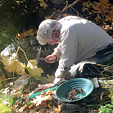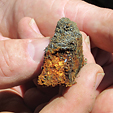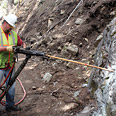All Articles
Legislative and Regulatory Update
October 2003 by Staff
• Administration won’t appeal latest ruling on Roadless RuleCasper, WY (AP)—The federal government will not appeal a court ruling that struck down a Clinton-era ban on building roads in a third of the country’s national forests, Wyoming Attorney General Pat Crank said.
According to Crank, the US Department of Justice has decided not to appeal the ruling this summer by US District Court Judge Clarence A. Brimmer in Cheyenne.
The Roadless Rule, issued in the final days of the Clinton administration, limits development on 58 million acres of forest land controlled by the Forest Service.
The ruling by Brimmer could open additional lands to oil, gas and mineral exploration. He issued a decision in July concluding the rule illegally created wilderness areas and should be overturned.
Now that the federal government has decided it won’t appeal, the only parties in the case who might try to keep the lawsuit alive are eight conservation groups that intervened in the litigation.
The environmentalists, however, might not be able to appeal the ruling because they were not original parties to the lawsuit, Crank said.
“We will argue vociferously that they don’t have standing,” he said.
Two activist groups have also filed a complaint against Brimmer in the case, alleging a conflict of interest because he owns stock or royalty interests in 15 oil and gas companies. No action has yet been taken.
• Improved forest management plan by year’s end
Washington, DC (AP)—Managers of the nation’s 155 national forests are getting more leeway to approve logging and other commercial projects with less formal environmental review under a Bush administration plan on track to be in place by the end of the year.
A final draft of the new forest management rules obtained by The Associated Press drew immediate fire from environmental extremists. They accused the administration of bowing to the timber and paper industries and weakening standards for protecting endangered or threatened species.
The new rules will be reviewed by the White House’s Office of Management and Budget before going into effect this fall. The plan would overhaul application of the 1976 National Forest Management Act.
The final rules would leave intact some of the most controversial proposals from an earlier version released last November. Like that version, the final plan would give regional managers of the Forest Service more discretion to approve smaller logging, drilling and mining operations without having to conduct formal scientific investigations known as environmental impact statements.
Such analyses, which outline the impact of a proposed activity on plant and animal life, can take years to complete. The new rules envision a more flexible approach that could be completed in months.
Forest Service officials said the new rules are designed to make forest planning more responsive to changing conditions by eliminating unnecessary paperwork and relying on assessments by local and regional managers.
“What we like most about this rule is it engages the public better than we have done in the past by promoting early involvement, making the plans easier to understand and getting them done in less than seven years,” said Sally Collins, associate chief of the Forest Service.
Collins said the Forest Service could cut costs by as much as 30 percent under the new approach.
She and other officials argued the plan maintains and even strengthens environmental protections, while increasing flexibility for forest managers.
Environmentalists said they were troubled that the plan would relax a requirement that the government protect fish and wildlife in national forests so the species do not become threatened or endangered. Instead, the rules assert an overarching goal to “maintain healthy, diverse and resilient native ecosystems and maintain species native to National Forest System land.”
The plan would direct forest managers to identify threats to wildlife, contribute to recovery of threatened or endangered species, and provide ecological conditions that help prevent species from becoming listed as threatened or endangered.
• IBLA rules in favor of Cortez Gold Mine and BLM
The Interior Board of Land Appeals (IBLA) ruled in favor of Cortez Gold Mine’s amendment to their Plan of Operations and against the Western Shoshone Defense Project who filed the complaint with the backing of the Sierra Club.
IBLA Deputy Chief Administrative Judge Bruce R. Harris upheld a decision by the Bureau of Land Management (BLM) in which they approved an amendment that would expand Cortez Gold Mine’s water infiltration system. The system pumps water from wells on and around the open pit mine. The water is used for mining operations, and runs through the infiltration system prior to returning to the ground.
Judge Harris stated he could not ignore the “comprehensive studies, analyses, and technical reports commissioned by Cortez to address the problems plaguing the previously approved infiltration sites. These detailed examinations fatally undermine (the appellant’s) contention that approval of the Infiltration Project was based on inaccurate and outdated information.”
A copy of the decision (Case # N64-93-001P (98-1A)) can be obtained from the IBLA. Up to 50 pages are free, with additional pages at 10 cents per page. IBLA, 801 N. Quincy St., MS 300-QC, Arlington, VA 22203. Phone (703) 235-3799. You can also view IBLA cases on the Internet at www.doi.gov/oha by clicking on EFOIA.

Mining Stock Quotes and Mineral & Metal Prices
Bedrock Nugget Hunting: Tools of the Trade
 As a guide to those who are thinking of taking up this activity or those who currently practice this trade, I have created a listing of the primary tools and equipment I use when nugget hunting.
As a guide to those who are thinking of taking up this activity or those who currently practice this trade, I have created a listing of the primary tools and equipment I use when nugget hunting.
Placer Gold Deposits in the Western States
 …to see the huge differences between the gold production amounts of the Western States, let’s look at the gold production—both hard rock and placer—of these 13 states up to the present.
…to see the huge differences between the gold production amounts of the Western States, let’s look at the gold production—both hard rock and placer—of these 13 states up to the present.
Legislative and Regulatory Update
Original Sixteen to One Goes to Court—Challenges MSHA Citations Part II
In the April 2001 issue of ICMJ, we published the opening statement of Michael Miller, President of Original Sixteen to One, in his administrative challenge of MSHA citations. Following is Michael Miller’s closing statement.
Miners Find Encouraging Prospects Near Livengood
New exploration on land that was scoured for gold years ago near Livengood indicates the property could be developed into a mine on a scale similar to the Fort Knox Mine, according to a Colorado-based company.
Explosives and Mining
 Explosives used correctly will save you both time and money being one of the best and most productive tools you can use.
Explosives used correctly will save you both time and money being one of the best and most productive tools you can use.
Subscription Required:
The Bawl Mill
• A Guide to Overlooked Gold Deposits—Part II
• Brighter Days Ahead Reports Nevada Mining Association
• Waldo Miners File Suit
• Roll-Front Uranium Deposits
• Deadly Storms May Expose Gems in Sri Lanka
• Picks & Pans: Dredging and Detecting in Sierra City
• Hidden Features in Venezuela
• Dredging for Monazite in Idaho
• Gold in the Philippines
• 2003 California State Gold Panning Championships
• Judge Holds Companies Liable for Some Damage
• The Golden Highway—Tuolumne County
• Looking Back
• Melman on Gold & Silver
• Mining Stock Quotes and Mineral & Metal Prices
Free:








